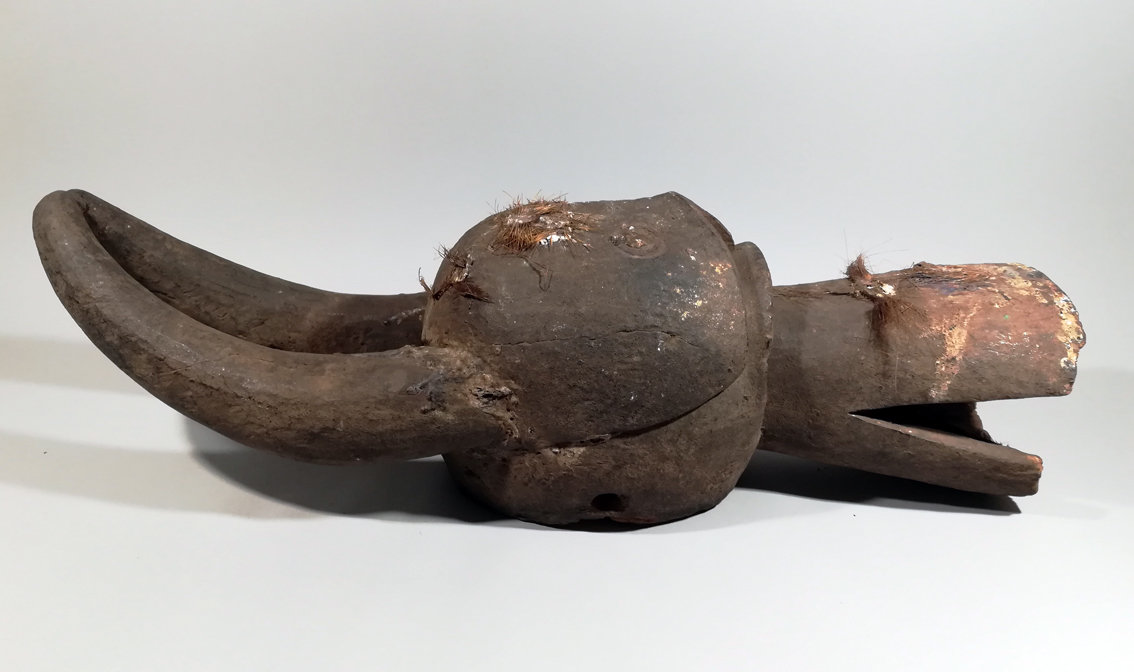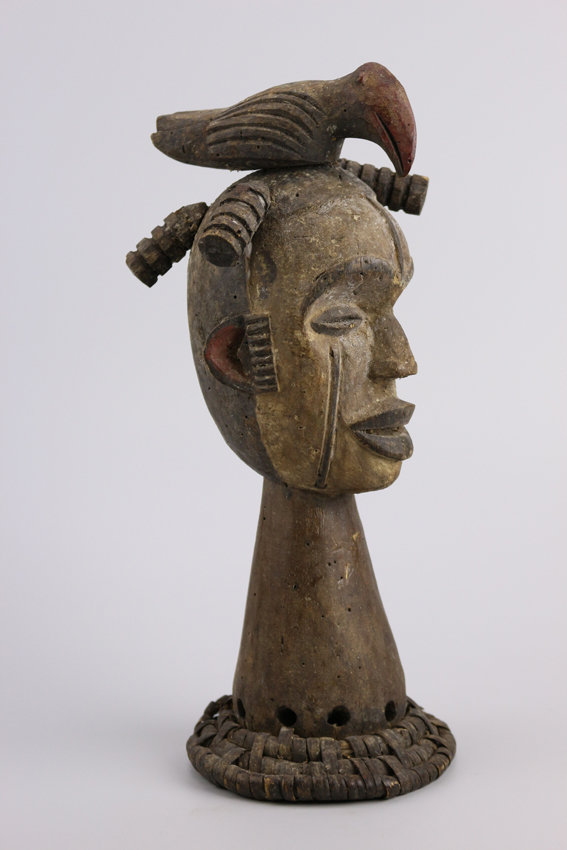-
Vue Rapide€4.100,00
-
Vue Rapide€2.600,00
Cameroon, Bamiléké – Dance mask
The Bamileke are a people of Central Africa, coming from Cameroon (West region) in the Grassland region where the Bamoun, Tikar also live, close to them by their common ancestors, their neighboring social structures and their languages. .
The work of D. Toukam (“History and anthropology of the Bamileke people”, Paris, L’Harmattan, 2010 and 2016; …) conclude that the Bamileke would most likely come from the Baladis of ancient Egypt (natives of Upper -Egypt). In Egypt, the current Feelahins / Copts are largely recognized as Baladis converted by force, but still retaining huge parts of their ancestral culture. Departing from Upper Egypt in the 9th century AD, the Baladis-Bamileke arrived in the Tikar region in the 12th century. They were neighbors of the Tikar, but were never descendants of Tikar, contrary to popular belief.
Les Bamilékés sont, en matière spirituelle, d’une grande complexité L’ensemble de leur organisation religieuse traditionnelle est composée de pratiques d’initiations, de méditations et de rituels.
Leur production d’objets liés à leurs différents cultes ont été d’une très grande richesse et certains cultes sont encore en cours de nos jours en exploitant d’anciens masques conservés dans certaines chefferies ou auprès de certains notables ou bien des pièces dites de “remplacement” créées pour remplacer les pièces anciennes usées, trop endommagées ou parce que l’usage en était limité dans le temps.
***
Cameroon, Bamiléké – Dance mask
The Bamileke are a people from Central Africa, coming from Cameroon (Western region) in the Grassland region where also Bamoun, Tikar, close to them by their common ancestors, their neighboring social structures and their languages live.
The works of D. Toukam (“History and Anthropology of the Bamileke People”, Paris, L’Harmattan, 2010 and 2016; …) conclude that the Bamileke would most probably come from the Baladis of ancient Egypt (indigenous of the Upper -Egypt). In Egypt, the current Feelahins / Copts are largely recognized as Baladis converted by force, but still retain huge portions of their ancestral culture. Part of Upper Egypt in the ninth century AD, Baladis-Bamileke arrived in the Tikar region in the twelfth century. They were Tikar neighbors, but were never descendants of Tikar, contrary to popular belief.
The Bamilékés are, in spiritual matter, of a great complexity The whole of their traditional religious organization is composed of practices of initiations, meditations and rituals.
Their production of objects related to their different cults have been of great wealth and some cults are still in use today using old masks preserved in some chieftaincies or with some notable or so-called pieces of ” replacement “created to replace worn old parts, too damaged or because the use was limited in time.
***
Kamerun, Bamiléké – Tanzmaske
Die Bamileke sind ein Volk von Zentralafrika, aus Kamerun (Western Region) in der Wiese Bereich, in dem auch Bamun die Tikar, in der Nähe, die sie von ihren gemeinsamen Vorfahren lebt, ihre Nachbarn und ihre soziale Strukturen Sprachen .
Die Arbeit von D. Toukam ( „Geschichte und Anthropologie der bamileke,“ Paris, L’Harmattan, 2010 und 2016 …) zu dem Schluss, dass Bamiléké würde höchstwahrscheinlich aus der Baladis des alten Ägyptens (Muttersprache Haut -Ägypten). In Ägypten Feelahins / Strom Kopten als Baladis umgewandelt gewaltsam weitgehend anerkannt, aber große Teile der Kultur ihrer Vorfahren beibehalten wird. Parteien von Oberägypten im neunten Jahrhundert nach Christus, der kamen Baladis-bamiléké in Tikar Region im zwölften Jahrhundert. Sie waren Tikars Nachbarn, waren aber, entgegen der landläufigen Meinung, niemals Nachkommen von Tikar.
Die Bamileke sind in geistlichen Dingen, von großer Komplexität Alle ihre traditionellen religiösen Organisation besteht aus Einweihungen Praktiken, Meditationen und Rituale.
Ihre Herstellung von Gegenständen im Zusammenhang mit ihren verschiedenen Kulten waren von großem Reichtum und einige Sekte sind noch heute Betreiber von alten Masken in einigen Stammesfürstentümer gehalten oder von einigen bemerkenswerten Teilentellenuuent, oder weil die Verwendung zeitlich begrenzt war.

